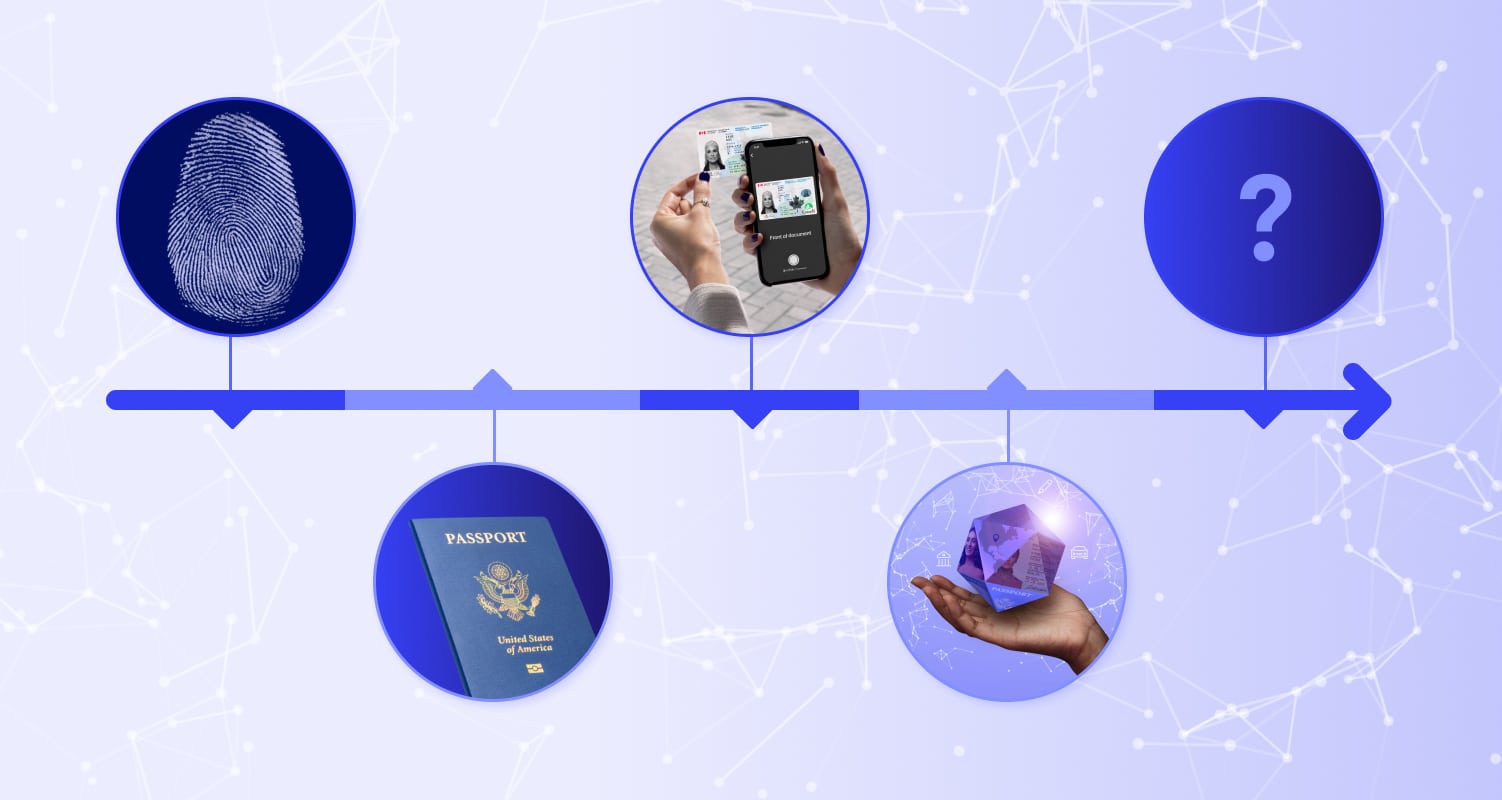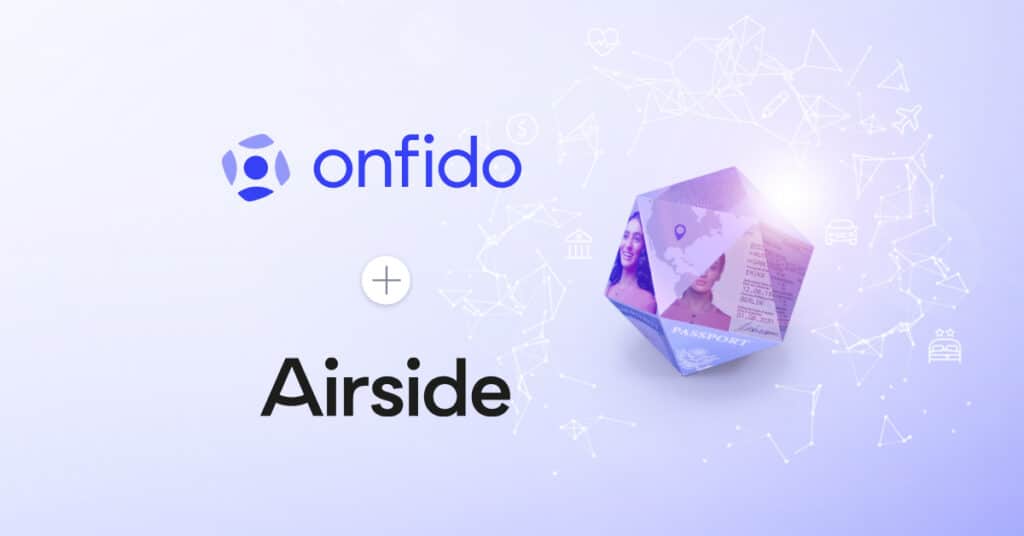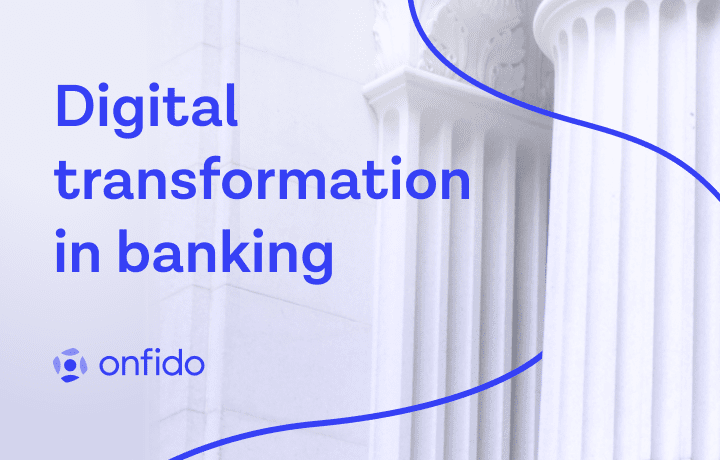
May 1876. That’s how far you’d need to go back to find the first paper-based, photographic identification card, created by William Notman for the US Centennial Exhibition. We’ve come a long way since then. Fast forward to 2023 and paper-based documents are more ingrained into our daily lives than ever, with approximately 90% of the world’s population using some form of paper-based identity document such as a passport or driver’s license.
While paper has reigned supreme for 150 years, the past three years has seen a shift from paper and plastic to 1s and 0s. The COVID-19 pandemic, coupled with the rise in smartphone usage (over 68% of the global population own a smartphone) has seen the world go digital seemingly overnight.
So, what next? Let’s take a closer look at the past, present and future of digital ID.
What are digital IDs?
To understand what a digital ID is, we first need to understand how the way we use physical IDs has changed over the past decade. If you opened a bank account 10 years ago, you might have been asked to show a physical ID such as a driver’s license or passport as part of a face-to-face ‘Know Your Customer’ (KYC) process. Within the past 10 years, the process of verifying an identity in this way has changed, with solutions like Onfido replacing face-to-face verification methods with fully remote identity verification.
Digital IDs take the above a step further. They do not digitize the process of verifying an identity, but instead digitize the identity documents themselves. Digital IDs are simply electronic versions of physical documents, typically stored on a digital wallet. One example of a digital ID is a mobile driver’s license (mDL). mDLs are digital representations of a government-issued physical driver’s license that can be stored on your smartphone, and include personally identifiable information such as name, age, address, issuing and expiration dates.
Digital IDs promise to create a more privacy-centric and convenient approach to storing identity information with a range of applications, from registering for government services through to securely purchasing age-restricted goods in-store.
What is a digital wallet?
To understand more about digital IDs, let’s talk about digital wallets. Digital wallets are functionally similar to physical wallets — they enable end-users to store and manage IDs and credentials such as passports and driver’s licenses — but are typically stored on a smartphone.
Digital wallets are already part of our daily lives. Over the past decade, consumers have transitioned from paying with physical bank cards, to tapping on a contactless payment terminal with their smartphone using a digitized version of their bank card stored on Apple Pay or Google Wallet. As of 2023, 26% of consumers worldwide have used mobile payments, with 40% of smartphone holders in the US using mobile payments on a regular basis. In the context of digital IDs, instead of storing bank cards, digital wallets are used to securely IDs such as mDLs.
What are the privacy strengths of digital IDs?
Digital IDs are far more than just a convenient way to store identity information. They offer a range of privacy and security benefits to consumers, from the way information is stored through to how it’s shared with third parties. The primary privacy benefits cut across storage, access, and standards:
Storage: Starting with the simplest benefit, digital IDs are one item fewer to carry with you, reducing the risk of physical identity theft. Even in the event of an individual’s smartphone being stolen, digital IDs are typically secured by biometrics such as a face or fingerprint, adding an extra layer of security compared to physical IDs.
Access: Physical IDs provide little control over who can access your information and when — even when you think you’re in control, identity still leaves a paper trail. Think back to the bank account opening: if the bank teller takes your ID into another room to photocopy it, who knows who else might see that information? How much of the information on your physical ID — such as eye color — is really essential to opening a bank account? Digital IDs, by comparison, are designed to share only essential information appropriate to that transaction with a business in an encrypted manner, keeping access to a minimum and security to a maximum.
Standards: While physical documents do conform to standards such as ISO/IEC 7810, which provide guidelines on the shape and size of physical IDs, digital IDs go a step further. Standards such as ISO 18013-5 for example provide strict guidelines on how businesses obtain mDL data, tie this back to an end-user, and verify if the information on the mDL is real, driving mDLs toward being as authoritative as the original physical government ID.
States with digital IDs
Digital ID adoption varies from country-to-country, and in the US some states are further along the path to digital IDs than others. As of 2023, a number of states are piloting or have fully launched digital IDs:
- Arizona: Arizona Mobile ID
- Colorado: MyColorado
- Delaware: Mobile ID
- Florida: Florida Smart ID
- Georgia: Digital Driver’s License
- Iowa: Iowa Mobile ID
- Louisiana: LA Wallet
- Maryland: MD Mobile ID
- Mississippi: Mobile ID
- Oklahoma: Oklahoma Mobile ID
- Utah: Utah Mobile ID
The list of US states with digital IDs is constantly evolving, with new legislation being put through and pilots launched on a regular basis. Today, the majority of US digital ID schemes are mDLs, and can be tracked on a variety of tools such as the mDL Connection Implementation Tracker.
Future of digital IDs
Digital IDs have come a long way over the past few years, but we’re still at 'day one'.
States and regulatory bodies are moving to make digital IDs, and digital identity more generally, more mainstream. The European Union’s eIDAS 2.0, which will go into effect in September 2023, mandates that all member states offer a digital identity wallet to their citizens, with the goal of "at least 80% of citizens [being] able to use a digital ID solution to access key public services by 2030.” In the US, traction is slower and more fragmented, with states rolling out digital IDs at their own pace, and private companies such as Airside building digital wallet infrastructure.
As we look to the future, digital IDs are here to stay, enabling privacy-centric, security, and convenient methods for end-users to prove that they are who they say they are. We’ve come a long way from William Notman’s first photographic identity document — the not-too-distant future is looking increasingly digital, enabling countless usability, privacy, and security benefits for consumers.
At Onfido, we’re looking ahead to the future of digital identity today. We’ve joined forces with Airside, an Onfido company, to build trust through user-controlled, shareable digital identity. See how we’re building ‘verify once, share anywhere’ identity on our upcoming webinar with Mike Tuchen (CEO, Onfido), Adam Tsao (Founder, Airside), and Yuelin Li (CPO, Onfido) on June 21st / 22nd.
Register for ‘Verify once, share anywhere: The future of digital identity’ with Mike Tuchen (CEO, Onfido), Adam Tsao (Founder, Airside), and Yuelin Li (CPO, Onfido) on June 21st / 22nd.






